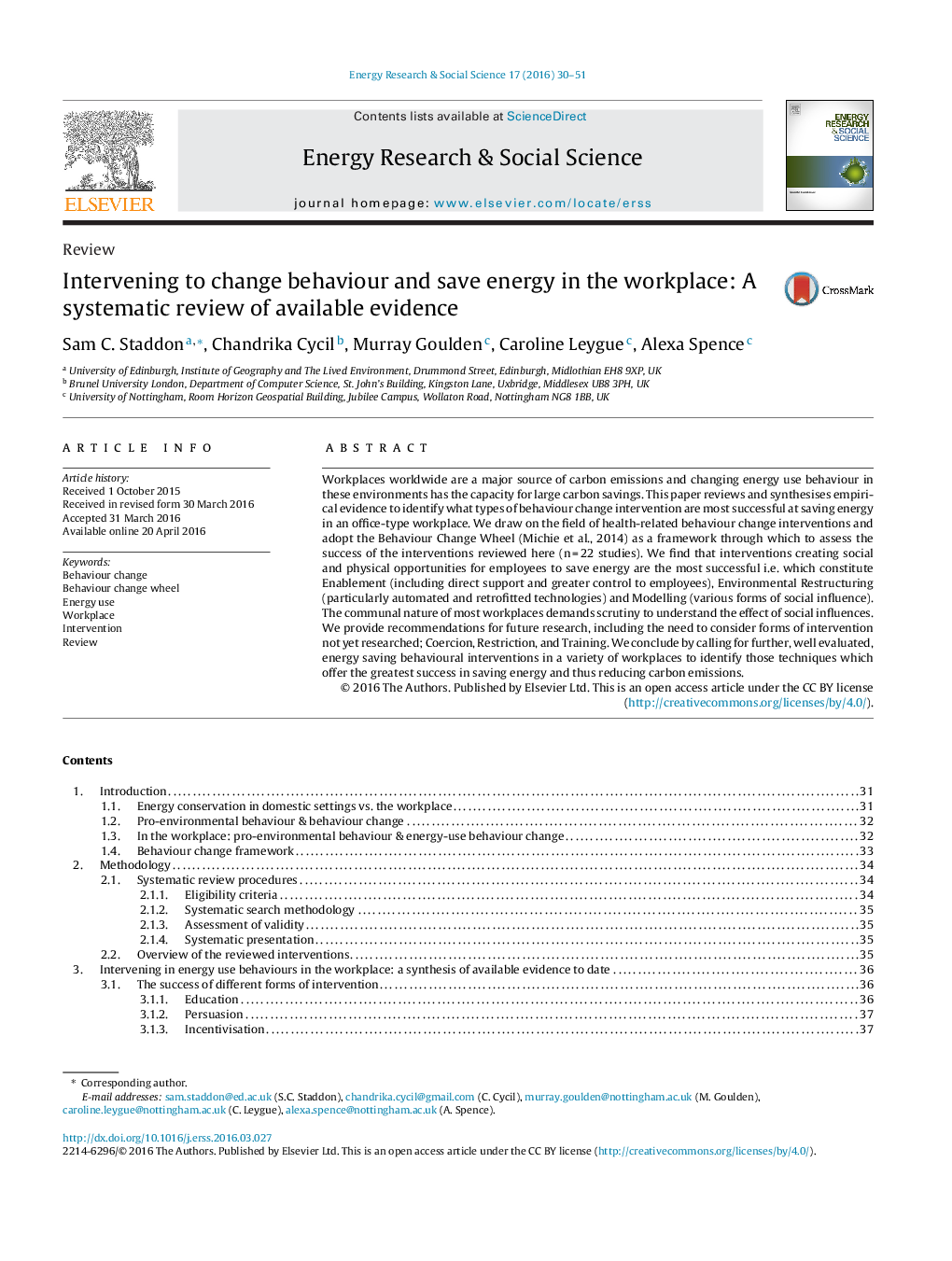| Article ID | Journal | Published Year | Pages | File Type |
|---|---|---|---|---|
| 6558048 | Energy Research & Social Science | 2016 | 22 Pages |
Abstract
Workplaces worldwide are a major source of carbon emissions and changing energy use behaviour in these environments has the capacity for large carbon savings. This paper reviews and synthesises empirical evidence to identify what types of behaviour change intervention are most successful at saving energy in an office-type workplace. We draw on the field of health-related behaviour change interventions and adopt the Behaviour Change Wheel (Michie et al., 2014) as a framework through which to assess the success of the interventions reviewed here (n = 22 studies). We find that interventions creating social and physical opportunities for employees to save energy are the most successful i.e. which constitute Enablement (including direct support and greater control to employees), Environmental Restructuring (particularly automated and retrofitted technologies) and Modelling (various forms of social influence). The communal nature of most workplaces demands scrutiny to understand the effect of social influences. We provide recommendations for future research, including the need to consider forms of intervention not yet researched; Coercion, Restriction, and Training. We conclude by calling for further, well evaluated, energy saving behavioural interventions in a variety of workplaces to identify those techniques which offer the greatest success in saving energy and thus reducing carbon emissions.
Related Topics
Physical Sciences and Engineering
Energy
Energy (General)
Authors
Sam C. Staddon, Chandrika Cycil, Murray Goulden, Caroline Leygue, Alexa Spence,
